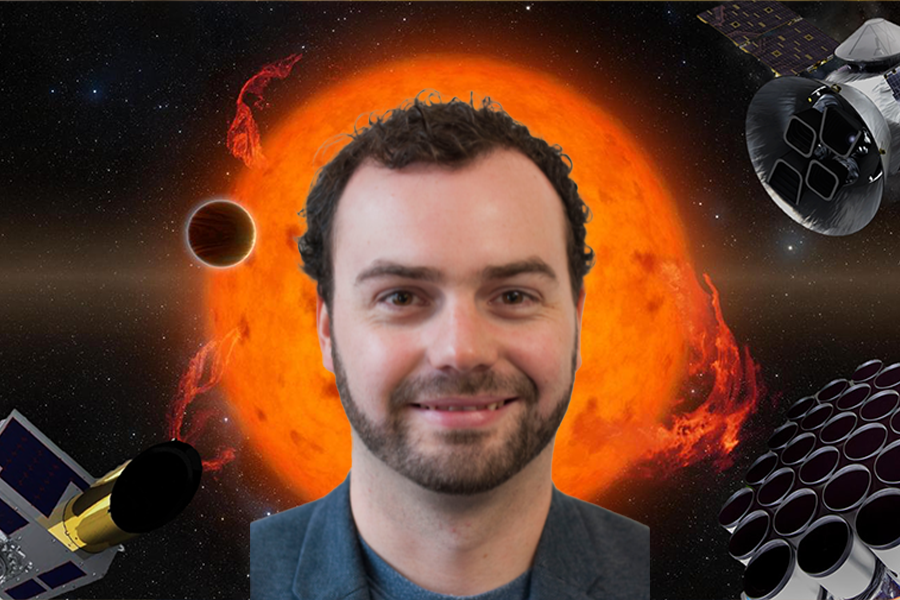- About▼
- Exo 101▼
- News
- Research▼
- Jobs + Internships▼
- Public Outreach▼
- Our Team▼
- Contact Us
- FR▼

Christopher Mann, a doctoral student at iREx, completed his PhD at the Université de Montréal this fall. Here he summarizes his doctoral research project.
For my PhD research, I focused on studying exoplanet transits. A “transit” occurs when a planet passes in front of its host star, blocking a small amount of the starlight that reaches a distant observer. This tiny drop in brightness, often measuring 0.1% or less, can be precisely measured with sensitive telescopes, allowing us to unveil details about the shadow-casting planet.
My specific research involved adapting instruments not initially designed for exoplanet studies and repurposing them for the collective effort in characterizing exoplanets. One such instrument, the Dragonfly Telephoto Array (or “Dragonfly”), was initially designed to study ultra-faint structures of galaxies and for this research goal and could only do so during the darkest parts of the night. I reworked many of the robotic telescope’s observing procedures to capture exoplanet transits so that it could be used even when the bright moon was in the sky. Additionally, I developed the necessary software to process the data from this unique instrument and characterize the planets causing these transits.

Composite image of exoplanet transit with the TESS, NEOSat, and Dragonfly Telephoto Array telescopes. Credit: NASA/JPL-Caltech, MSCI, Canadian Space Agency, and the Dragonfly Team
I also utilized a small Canadian spacecraft known as the Near-Earth Object Surveillance Satellite (NEOSSat). NEOSSat was originally built to monitor asteroids close to Earth’s orbit and artificial satellites orbiting Earth. However, I repurposed it by pointing it at distant planetary systems to measure their transits. NEOSSat’s advantages, such as being in space and having the ability to stare at a target for days without interruption from daylight or Earth’s rotation, made it particularly effective for observing certain types of exoplanets. This was especially useful when a transit event lasted for 10+ hours or if the timing of a transit was uncertain. NEOSSat could keep an eye on the star for an extended period, capturing long events or waiting for unpredictable transits, which would be challenging from ground-based observatories.
The primary goal of converting these instruments into exoplanet detectors was to support the Transiting Exoplanet Survey Satellite (TESS) mission. TESS, a powerful space telescope, surveys the entire sky for exoplanets around bright and nearby stars. The discoveries made by TESS are expected to be the best candidates for studying exoplanet atmospheres. To ensure TESS’s success, a network of smaller observatories, including the ones I adapted, collaborates to follow up on TESS’s candidates, ensuring they are genuine exoplanet transits and not the result of other processes mimicking them.
Christopher completed his PhD at the Université de Montréal between 2018 and 2023, under the supervision of Professor David Lafrenière of iREx. His thesis will be available soon.
You must be logged in to post a comment.